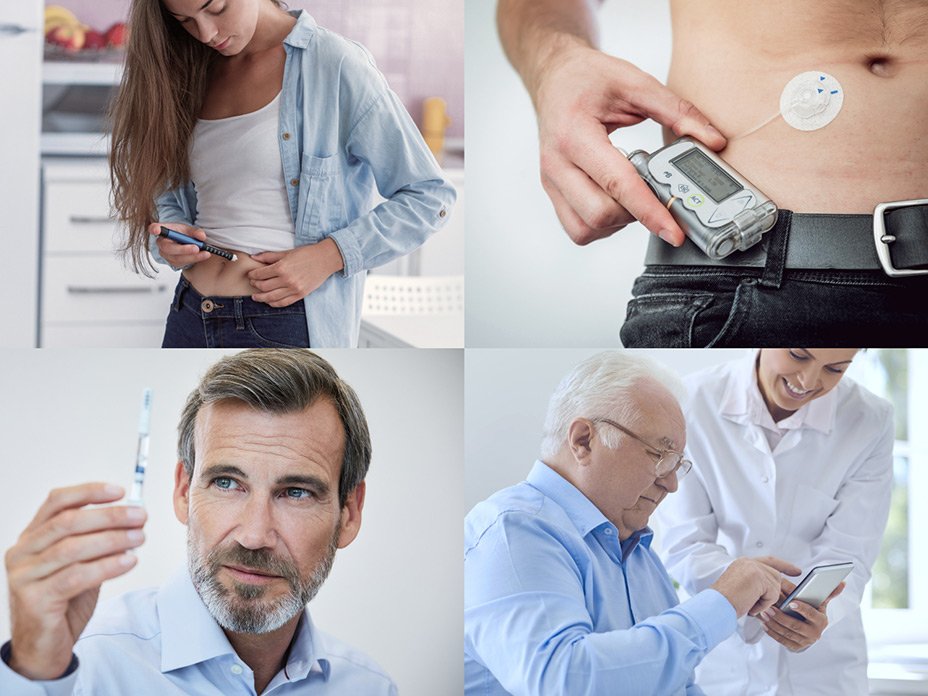![[Translate to Englisch:] woman with pen](/media/content/Bilder/Produkte/Woman-with-injectible.jpg)
Parenteral products represent a major growth engine in today’s surging global biopharma market. Their share of the global market figures to grow from 53% in 2020 ($606bn) to 57% in 2027 ($1,298bn)1, outpacing other routes of administration. On average, more than 40% of the medications approved by the FDA are injectable, with subcutaneous and intramuscular products making up a growing percentage of those approvals.2,3
As more and more injectables enter the global pipeline, these new assets are facing major shifts in market expectations and lifecycle success factors. In today’s market, it takes far more than a promising molecule and a validated therapeutic target for new products to gain traction. Differentiating user experience, patient-centric features, and other commercial success factors are now as critical as the drug substance and its mechanism of action—not to mention the injectable delivery system that will be used to administer that new treatment.
Four major trends are driving these shifts in the lifecycle roadmap for new injectables. Steps to address these forces are already a critical feature of a truly integrated, efficient, and resilient drug development and manufacturing processes.

Patient-centricity will be critical to the next generation of injectable products. For many users, the delivery experience is will be as important as the drug.
Peter Soelkner, Managing Director
4 major market drivers for injectables
Chronic diseases
Conditions like diabetes, heart disease, and Alzheimer’s are growing rapidly in both global prevalence and economic impact. The sustained, intensive treatment these conditions require will increase demand for products optimized for patients with specific symptoms, side effects, and demographic profiles.
Development costs
Demand continues to grow for specialized, targeted, and precision treatments—as well as the complex processes and the small, technically specialized batches these products often require. As more sensitive, highly customized biologics enter the global pipeline, their biopharma owners are under growing pressure to optimize costs and shorten timelines wherever possible.
COVID-19
Remote care management has surged during the pandemic, while patients themselves are eager to stay home as much as possible. This increases the pressure on biopharma companies to not only launch new treatments faster and more efficiently than ever, but also enhance those new products with features that make self-administered treatments as safe, effective, and convenient as possible.
At-home care
There is now an accelerating shift from resource-intensive, clinic-based patient management to at-home, self-administered care. Empowering patients to manage their own care at home can lighten provider workloads, reduce demand for expensive clinical services, and make adherence more convenient for patients. Not surprisingly, many biopharma companies have begun to proactively target this valuable use case in their product development strategies.
Delivery innovations for changing demands

With these major trends in play, new injectables now need to hit the market with a full-lifecycle development plan to maximize production efficiency, enhance user convenience, and optimize patient-friendliness. One key to that ongoing evolution: a product’s packaging and delivery system. These components are a critical feature of any strategy to optimize injectable products for simplicity, convenience, and long-term ease-of-use.
Prefilled syringes
Prefilled syringes are a user-friendly option that makes it easy and safe to deliver each dose. This ready-to-inject format offers patients a simple, comfortable administration process with predefined volumes, which often results in improved compliance—a significant differentiating value.
Pens and autoinjectors
Convenient, compact, and easy to handle, these secondary packaging innovations can be a useful way to facilitate long-term self-administration, especially for patients whose condition may compromise their physical dexterity.
Wearables
Numerous treatments that require a specific, uniform amount of medication can be delivered via innovative clip- and stick-on parenteral delivery systems. These convenient devices enable consistent dosing of large product volumes, while also fitting discreetly into a patient’s outfit and lifestyle.
Connected smart devices
A new generation of connected autoinjectors, infusion pumps, and other drug delivery technologies combine personalized dosing with data capture and reporting capabilities. These delivery systems simplify dosing and offer a new level of digital visibility and insight into each course of treatment.

Launching in a Delivery Device
Learn about 5 important factors for your team to consider when planning a product’s transition to a delivery system.
Partners to support your success
While new delivery solutions can contribute significant value to a product’s market profile, they also add another dimension that’s equally important to consider and solve: production complexity. This is where the right strategic production partner can be more valuable than ever.
This partner is one who can provide multifaceted technical expertise, customized solutions, and market foresight—not just prior to and at launch, but across the product lifecycle. The path to success is evolving quickly for new injectables, and navigating the shifting lifecycle milestones can seem like a daunting process. Having the knowledgeable, experienced guide can make all the difference.
References:
1 Global Data Sales Analytics, 24 June 2020
2 FDA.gov
3 ibid

